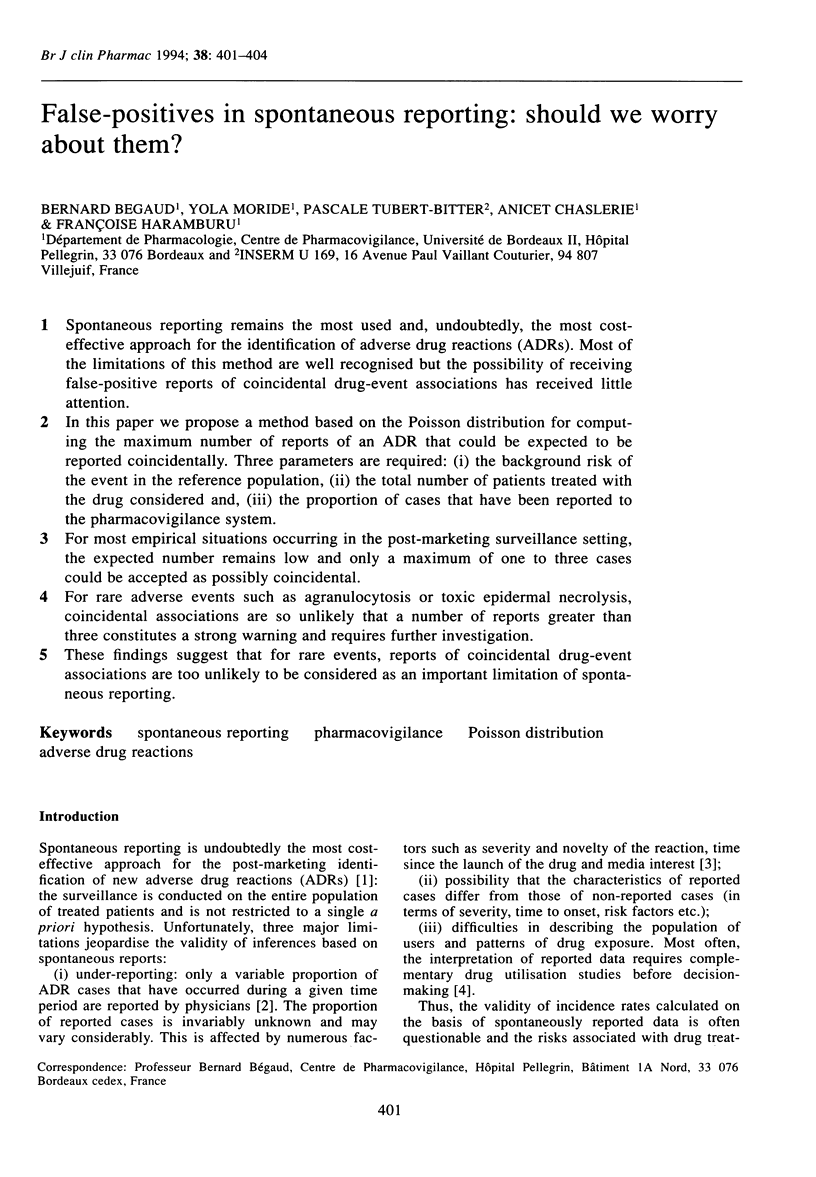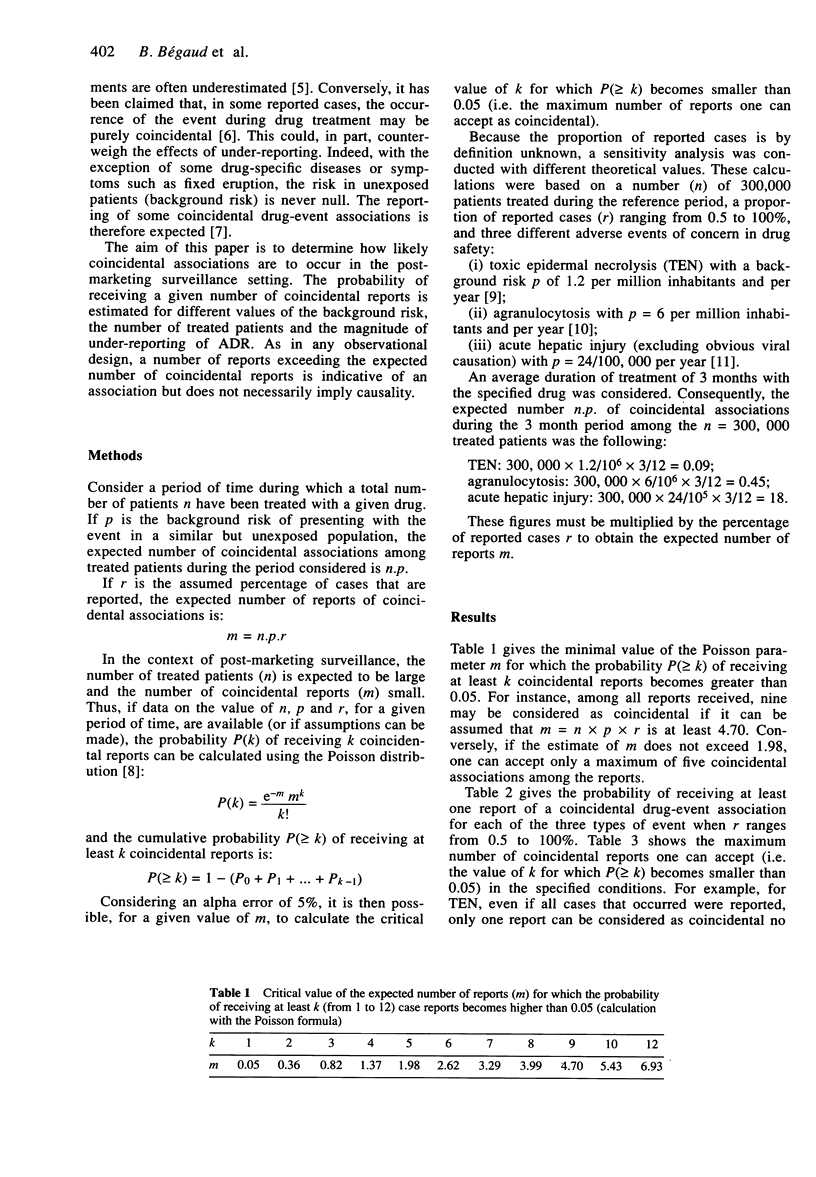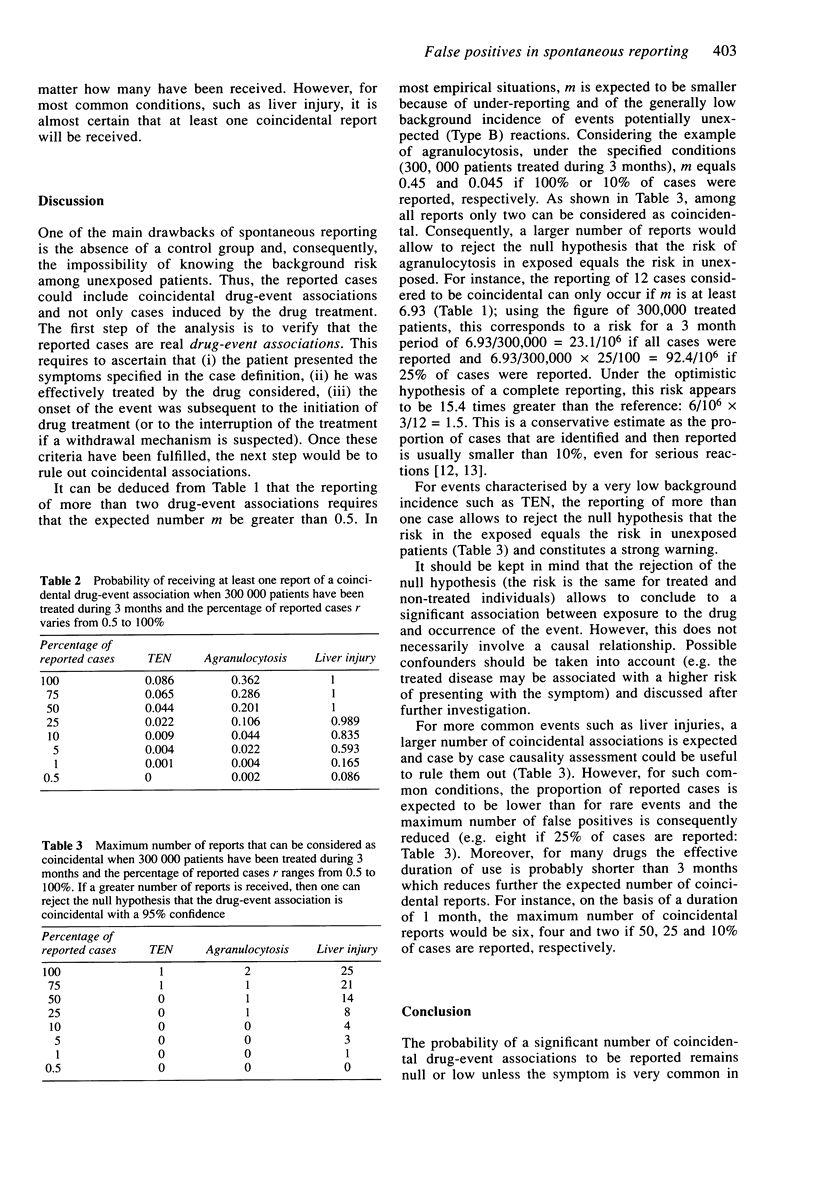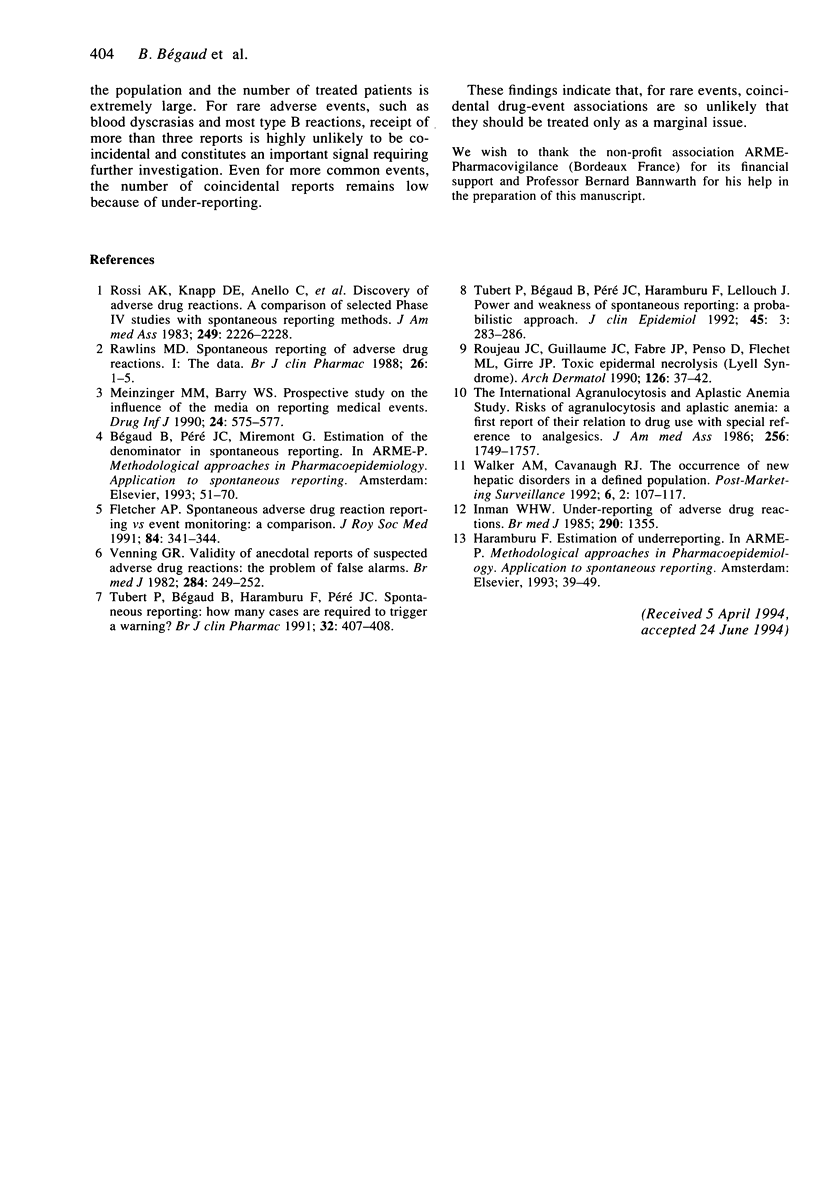Abstract
Spontaneous reporting remains the most used and, undoubtedly, the most cost-effective approach for the identification of adverse drug reactions (ADRs). Most of the limitations of this method are well recognised but the possibility of receiving false-positive reports of coincidental drug-event associations has received little attention. In this paper we propose a method based on the Poisson distribution for computing the maximum number of reports of an ADR that could be expected to be reported coincidentally. Three parameters are required: (i) the background risk of the event in the reference population, (ii) the total number of patients treated with the drug considered and, (iii) the proportion of cases that have been reported to the pharmacovigilance system. For most empirical situations occurring in the post-marketing surveillance setting, the expected number remains low and only a maximum of one to three cases could be accepted as possibly coincidental. For rare adverse events such as agranulocytosis or toxic epidermal necrolysis, coincidental associations are so unlikely that a number of reports greater than three constitutes a strong warning and requires further investigation. These findings suggest that for rare events, reports of coincidental drug-event associations are too unlikely to be considered as an important limitation of spontaneous reporting.
Full text
PDF



Selected References
These references are in PubMed. This may not be the complete list of references from this article.
- Fletcher A. P. Spontaneous adverse drug reaction reporting vs event monitoring: a comparison. J R Soc Med. 1991 Jun;84(6):341–344. doi: 10.1177/014107689108400612. [DOI] [PMC free article] [PubMed] [Google Scholar]
- Inman W. H. Under-reporting of adverse drug reactions. Br Med J (Clin Res Ed) 1985 May 4;290(6478):1355–1355. doi: 10.1136/bmj.290.6478.1355. [DOI] [PMC free article] [PubMed] [Google Scholar]
- Rawlins M. D. Spontaneous reporting of adverse drug reactions. I: the data. Br J Clin Pharmacol. 1988 Jul;26(1):1–5. doi: 10.1111/j.1365-2125.1988.tb03356.x. [DOI] [PMC free article] [PubMed] [Google Scholar]
- Rossi A. C., Knapp D. E., Anello C., O'Neill R. T., Graham C. F., Mendelis P. S., Stanley G. R. Discovery of adverse drug reactions. A comparison of selected phase IV studies with spontaneous reporting methods. JAMA. 1983 Apr 22;249(16):2226–2228. doi: 10.1001/jama.249.16.2226. [DOI] [PubMed] [Google Scholar]
- Roujeau J. C., Guillaume J. C., Fabre J. P., Penso D., Fléchet M. L., Girre J. P. Toxic epidermal necrolysis (Lyell syndrome). Incidence and drug etiology in France, 1981-1985. Arch Dermatol. 1990 Jan;126(1):37–42. doi: 10.1001/archderm.126.1.37. [DOI] [PubMed] [Google Scholar]
- Tubert P., Bégaud B., Haramburu F., Péré J. C. Spontaneous reporting: how many cases are required to trigger a warning? Br J Clin Pharmacol. 1991 Oct;32(4):407–408. doi: 10.1111/j.1365-2125.1991.tb03922.x. [DOI] [PMC free article] [PubMed] [Google Scholar]
- Venning G. R. Validity of anecdotal reports of suspected adverse drug reactions: the problem of false alarms. Br Med J (Clin Res Ed) 1982 Jan 23;284(6311):249–252. doi: 10.1136/bmj.284.6311.249. [DOI] [PMC free article] [PubMed] [Google Scholar]


